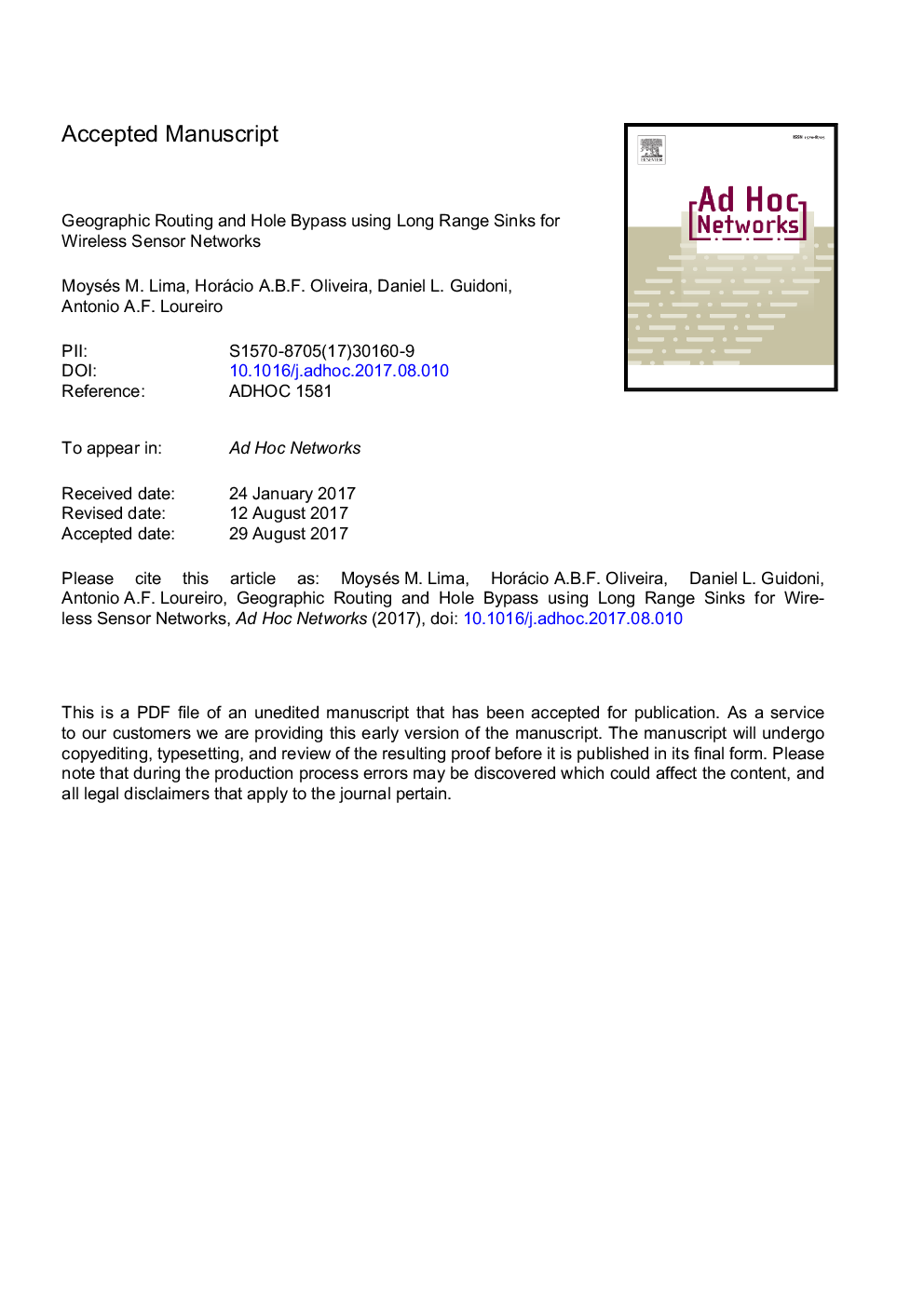| Article ID | Journal | Published Year | Pages | File Type |
|---|---|---|---|---|
| 4953495 | Ad Hoc Networks | 2017 | 17 Pages |
Abstract
Greedy Forward is a well-known technique used by most of the geographic routing algorithms to forward packets to the node that is geographically closer to the destination node. It is the simplest form of the proposed geographic routing algorithms and it is particularly attractive in sensor networks by bringing additional advantages such scalability, dynamism, and high delivery rates. However, in the presence of a hole (or voids), greedy forward techniques tend to fail. Thus, a hole bypass solution needs to be used in order to route packets to a node where greedy forwarding process can be resumed. In this work, we propose a new geographic routing algorithm called REACT that can bypass routing holes and create routing paths toward the sink node. Our solution takes advantage of the higher communication range of the sink node and the Received Signal Strength Indicator (RSSI) to enable the construction of routing paths by self-electing the next hop at each step while also performing data aggregation. No extra packets are required to configure the routing task. Our results clearly show an efficient data delivery achieved by the proposed algorithm in scenarios with routing holes with all the benefits of a greedy forwarding technique.
Keywords
Related Topics
Physical Sciences and Engineering
Computer Science
Computer Networks and Communications
Authors
Moysés M. Lima, Horácio A.B.F. Oliveira, Daniel L. Guidoni, Antonio A.F. Loureiro,
